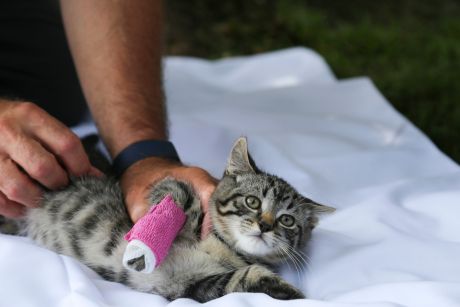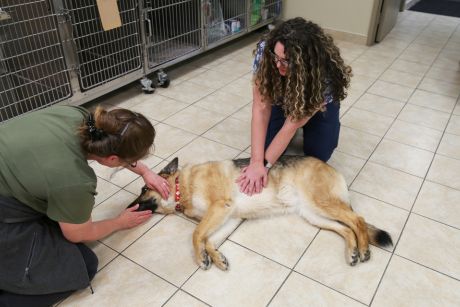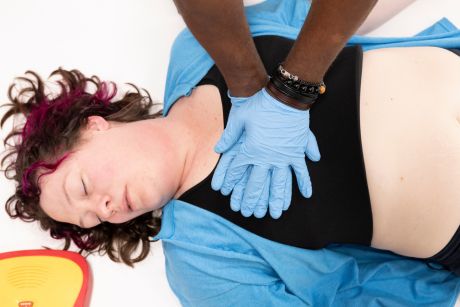
As a cat owner, you understand that your feline friend is more than just a pet—they're a cherished family member. Ensuring their safety and well-being is a top priority, but what happens if they face an emergency?
Posted November 25, 2024 by Red Cross Talks

As a cat owner, you understand that your feline friend is more than just a pet—they're a cherished family member. Ensuring their safety and well-being is a top priority, but what happens if they face an emergency?
Posted November 25, 2024 by Red Cross Talks

As dog owners, we'd do anything to keep our furry friends safe, right? From sudden injuries at the dog park to unexpected illnesses at home, pet emergencies can catch us off guard. Knowing how to stay calm and act quickly can make a difference during an unexpected crisis.
Posted August 30, 2024 by Red Cross Talks

When it comes to disasters and crises around the world, local Red Cross and Red Crescent Movement staff and volunteers are at the heart of the response— taking action to support people who have been impacted.
Posted March 30, 2023

Every day, members of the Red Cross and Red Crescent Movement respond to emergencies and disasters around the world. Each Red Cross or Red Crescent National Society is distinct from each other but linked together by the same guiding principles. So how does this all work?
Posted March 24, 2023 by Red Cross Talks

Watching dramatic CPR scenes on TV or in movies can be misleading, especially when it comes to understanding how CPR works in real life. We get it—exciting moments make for good storytelling, but they do not show what CPR is really like. Let's talk about what CPR is actually like and when it should be done.
Posted March 02, 2023 by Andréa Parent

There are a variety of reasons why you might have to stay home this winter, like a virus, COVID-19, a snow or ice storm, or a cold wave. While the first few days might feel like a nice break, you may also experience feelings of boredom or loneliness. Here are some tips for a successful isolation.
Posted February 21, 2023 by Red Cross Talks

There are many beliefs or myths that can and do stop people from helping another individual in distress, such as cardiac arrest. In fact, seven out of 10 cardiac arrests happen in front of bystanders, however less than 20% of bystanders end up providing first aid.
Posted January 26, 2023 by Red Cross Talks

With any emergency, ensure your family has an emergency plan and emergency kit, as well as evacuation plans. Ensuring you have food to sustain you for at least three days is part of your emergency plan and we have tips to help plan for that.
The purpose of this blog, quite simply, is to talk. This blog is an opportunity for Red Cross staff, volunteers, supporters and friends to share stories about what is happening in your community and the important work you are doing. It is a tool that will help keep all of us connected.
Looking for something specific? Try filtering posts by selecting a topic from the list below:
All content copyright © 1999 - 2025 Canadian Red Cross. All rights reserved. Charity Registration Number: 119219814RR0001

